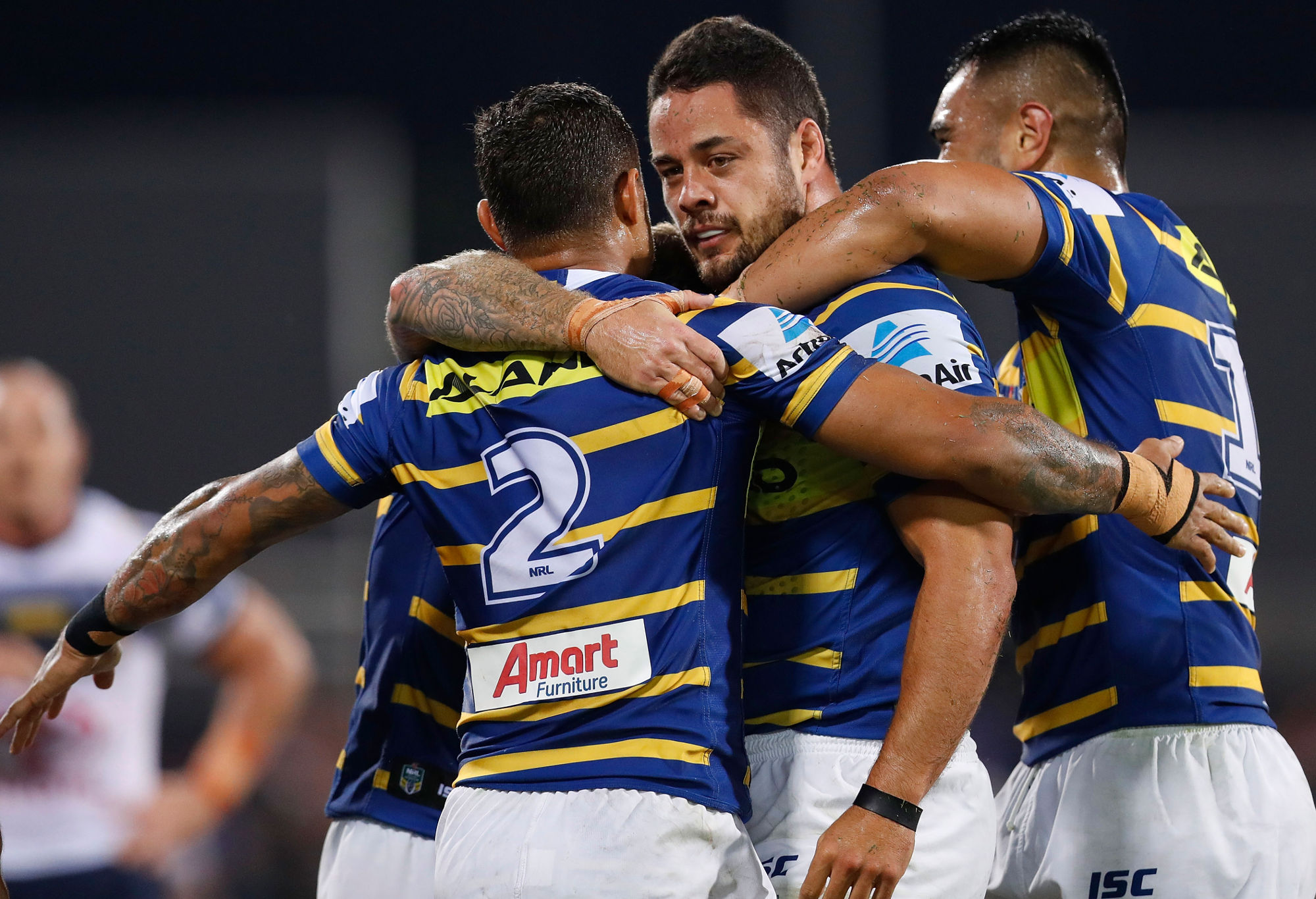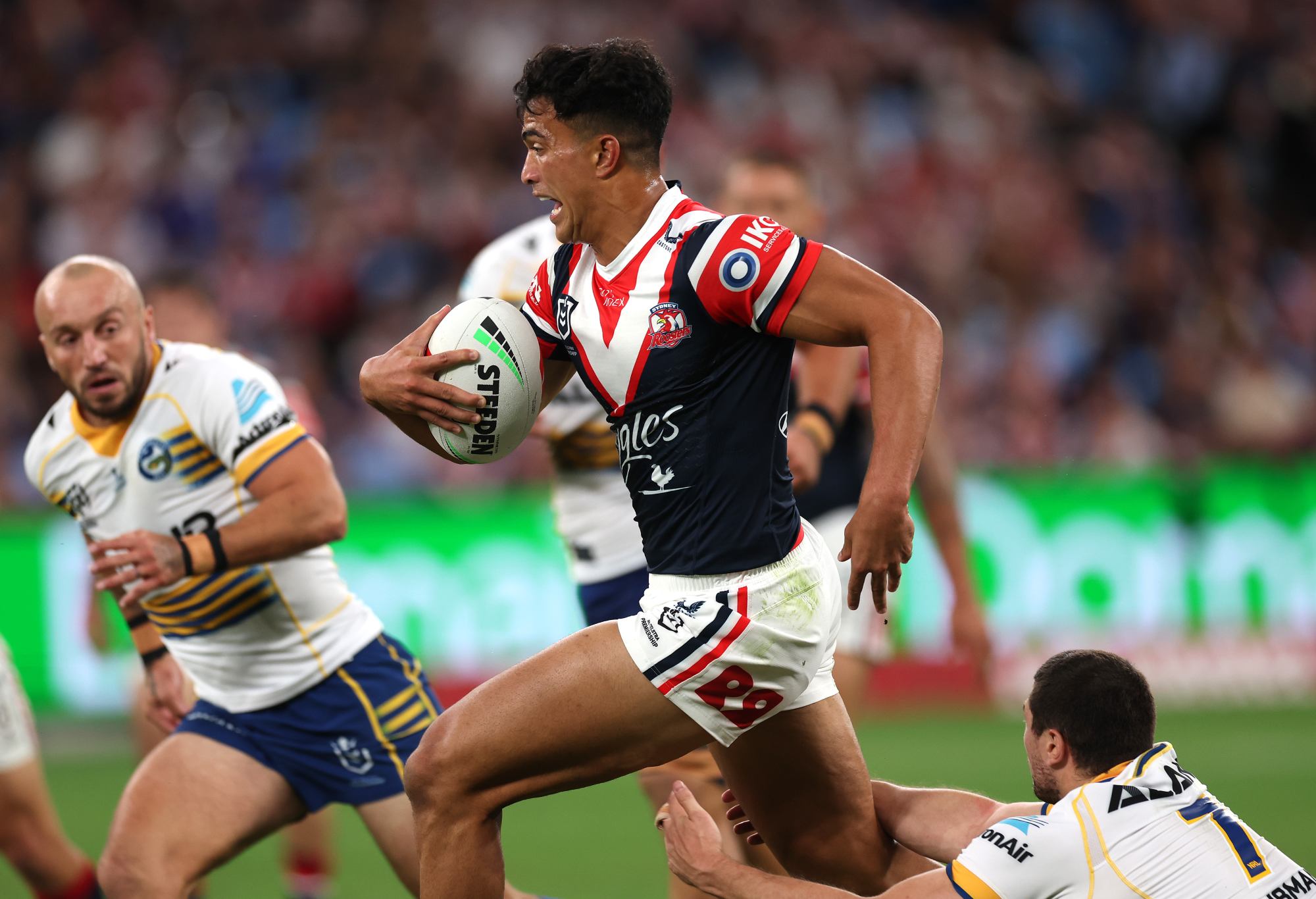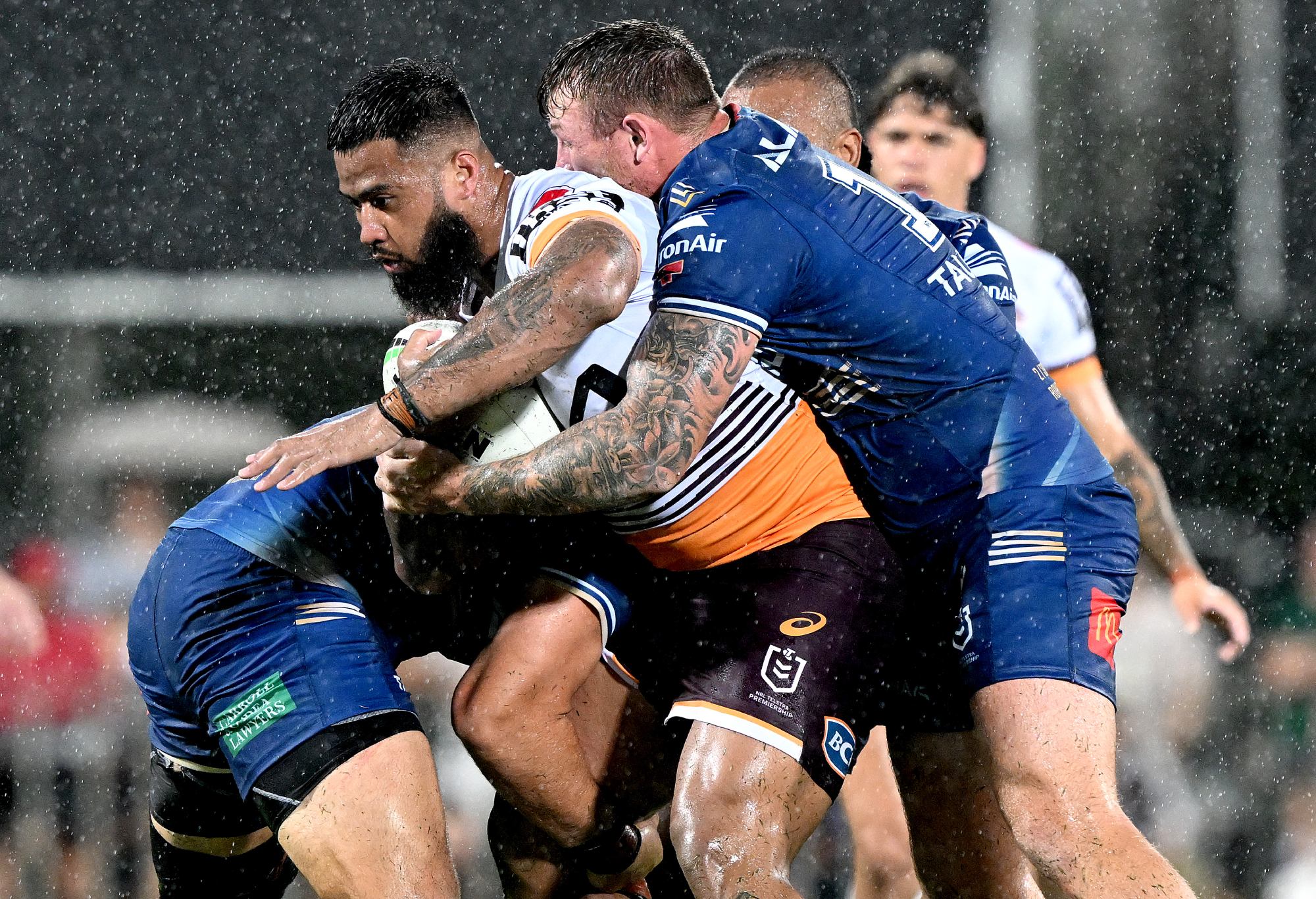Of all the dumb ideas rugby league officials have come up with in recent years, this ranks somewhere in the middle, but it’s still pretty dopey.
Despite still not sealing a collective bargaining agreement with their own players nearly six months since the last one expired, the NRL now is considering a loophole in its already convoluted salary cap rules to allow clubs an exemption to sign rugby players from particular countries.
As is often the case with these kite-flying exercises, there is little detail and a lot of rhetoric but the main crux of this “brainwave” is that rugby players – which may or may not be confined to players who aren’t already professionals in the Australian, England and New Zealand competitions – could be added to NRL rosters outside the salary cap with a limit of $1 million per club.
Not that Rugby Australia chairman Hamish McLennan needed extra fodder to laugh at the NRL’s paranoia in the contrived code wars but he happily offered up his contact book for the league talent scouts, knowing their chances of convincing any player of substance to switch sports would not be worth the international call costs.
CLICK HERE for a seven-day free trial for your favourite sport on KAYO
A similar idea was floated by the CEO at the time Dave Smith a decade ago when he made a song and dance about a so-called war chest of funds that would be set aside to help prevent players from heading elsewhere, like Jarryd Hayne joining the NFL.

Jarryd Hayne returned to the NRL after stints in the NFL and rugby sevens. (Photo by Jason McCawley/Getty Images)
There is so much wrong with that sentence in hindsight but all you need to know is this scheme not only was never used but never existed.
Rugby league should be thankful that it operates with very little competition for its playing talent.
Poking the international rugby union bear should be the last thing they do.
The NRL has primacy over rugby in the Australian states on the eastern seaboard that care about the two codes but apart from Papua New Guinea, is there another country where that is the case?
Definitely not in the sport’s two other traditional powerhouses in New Zealand or England while the other major rugby playing nations like South Africa, France, Ireland, Italy and Argentina have comparatively little or no interest in league.
Does anyone genuinely think NRL clubs are going to go to these countries to sign rugby players who have probably never seen the 13-a-side version of the sport to supposedly bolster their roster just because it would sit outside the salary cap?
It’s interesting to say the least when you hear rugby league zealots say their sport will always attract the top talent because they’ve got the best product.
Really? Best product. If that was actually the case then it probably would have gained more traction over the years than the few pockets on the global landscape where it has a genuine foothold.
Rugby league is a fine sport and the tribalism and passion it has built up through the Australian premiership has been an unqualified success.
But if the NRL was truly in competition with rugby or other internationally popular sports for playing talent, then it wouldn’t even be a blip on the radar.
Like the AFL, the NRL officials should be happy they don’t have to put up with the pale imitation syndrome that other Australian sporting leagues can never conquer.
The A-League, NBL and BBL can reach their absolute maximum potential as far as playing standards, salaries, TV ratings and crowds yet they will always be battling the perception that their competition is an inferior version to what is on offer overseas.

Joseph Suaalii . (Photo by Mark Kolbe/Getty Images)
And in those sports, when the foreign franchises come calling, the Australian sides can do little apart from wishing their player well and trying to replace them from the already competitive battleground for the best young athletes in the land.
Rugby union also faces the problem that even though Super Rugby has many of the best players on the planet in its ranks, mainly on the other side of the Tasman, the biggest dollars can be earned in the UK and France.
Funnily enough, England’s Premiership Rugby competition has a marquee player system which it has used to cherry-pick talent from the NRL ranks, kind of like what the NRL is now floating except it’s actually a rule.
Each club was allowed two players sitting outside the salary cap although that is being cut back to one, grandfathered out to when the existing contracts run out.

Semi Radradra playing for Fiji. (Photo by Cameron Spencer/Getty Images)
Former Parramatta Eels winger Semi Radradra has been a beneficiary of this clause – he is on a deal worth a reported £500,000 a season, around $930,000 in Australian dollars.
He’s coming to the end of his stint with the Bristol Bears but is returning to France’s Top 14 on a similar contract for two more years despite being 30 and coming off a couple of knee surgeries.
If he is worth that much, imagine the kind of big bucks the NRL’s younger outside backs could earn if they dedicated themselves to the 15-player code.
Everyone who thinks Joseph Suaalii will return to the Roosters and rugby league’s bosom after his three-year deal ends with the 2027 Rugby World Cup could be in for a rude shock.
He will likely be front and centre in the global shopfront for European rugby’s club big-spending bosses who have way deeper pockets and more inflated egos than the Australian suits who are taking up so much of the current news cycle with their grand ideas and pot shots at their cross-code rivals.

Payne Haas. (Photo by Bradley Kanaris/Getty Images)
Broncos prop Payne Haas is the latest NRL star to be linked to a move to rugby with a switch to a French club floated as an option.
It’s no coincidence that these kinds of reports are coming out while Haas is in the midst of contract extension negotiations with Brisbane.
The NRL has enjoyed a relatively sedate time of it over the past 15 years or so without the threat of too many stars being tempted by a switch of codes, mainly due to Rugby Australia’s previously poor financial health.
But now that there is competition from home soil and beyond, league is clearly worried by the threat of losing its top talent.
It’s still pretty unlikely that more than a handful of NRL stars will jump ship in the four years leading up to the Rugby World Cup in Australia as the Wallabies look to use their expected revenues from that tournament and the British and Irish Lions touring here to poach particular players.
Long term, the concern for the NRL will be if Rugby Australia spends its pennies wisely to revive the sport to its peak of 20 years ago while remaining financially strong after the two big sugar hits on the horizon.

(Photo by Albert Perez/Getty Images)
Instead of worrying about outlandish ideas that won’t boost their overall player depth in a meaningful way like making foreign rugby imports exempt from the salary cap, the NRL should look at a marquee system to ensure their elite stars stay put.
You know, the ones who actually get fans through the turnstiles and eyeballs to the broadcast deals that are the lifeblood of the sport.
If each club had a salary slot that sat outside the salary cap, it would not only ensure the best 17 players remain in the NRL it could also act as a way of levelling out the playing field so that each club is able to sign a superstar.
It would in theory help a team like Canberra keep Jack Wighton by making it possible for them to throw the National Mint at him to stop a team like South Sydney, who already have a few marquee names on their roster, from tempting him away from the club that developed him as a teenager.

































































































